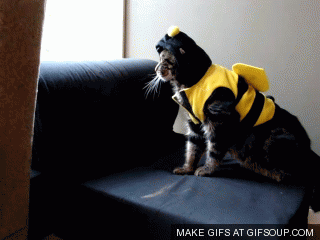Mostly it's a way of working around the fact that many of the "native wildflowers" we commonly see around us are not native.
That's right folks:
Queen Anne's Lace? Native to temperate Europe and southwest Asia.
Bull Thistle? Native to Europe, southwest Asia, and northern Africa.
Common Teasel? Native to Europe.

St. John's Wort? Most species are Old World natives.
Common Chicory? Native to Europe.

Larkspur? Native to Europe.

They have, however, been here a pretty long time. Most of the above species have been common in the North American landscape for the last several hundred years.
We call them indigenous because they often are an essential part of the landscape (native pollinators love many of the species listed here!) and because they have been here long enough to have evolved along with many of the native species. We cannot call them native because, well, they aren't.
I truly wish I could include some of these species in my wildflower mixes, but then many golf courses (and other programs) would be reluctant to use them because they contain non-native species. Planting non-natives would disqualify them from being recognized by several organizations, including the Audubon Cooperative Sanctuary Program.
Which brings me to problem I've always had with this particular classification system:
Where is the line drawn between native and non-native? Many species traveled from Asia to the Americas and vice versa over the Bering Land Bridge a looooooong time ago (with the bridge being submerged ~ 11,000 years ago). We consider many of those species (such the current equids and camelids of Eurasia) to be native in their "new" range, but not in their original range.

Seriously, if someone has the answer to this, I'd be thrilled to hear it. Is it the land bridge being submerged? Colonization of the Americas by Old Worlders (Vikings? Cristobal Colon in 1492? Purported Egyptians? Japanese? Siberians?)? Is there an arbitrary date?
Most of the information I've found has been weirdly unprofessional. Lots of odd conspiracy theories. I'm just a gal looking for answers. Send me your links if you have them!














